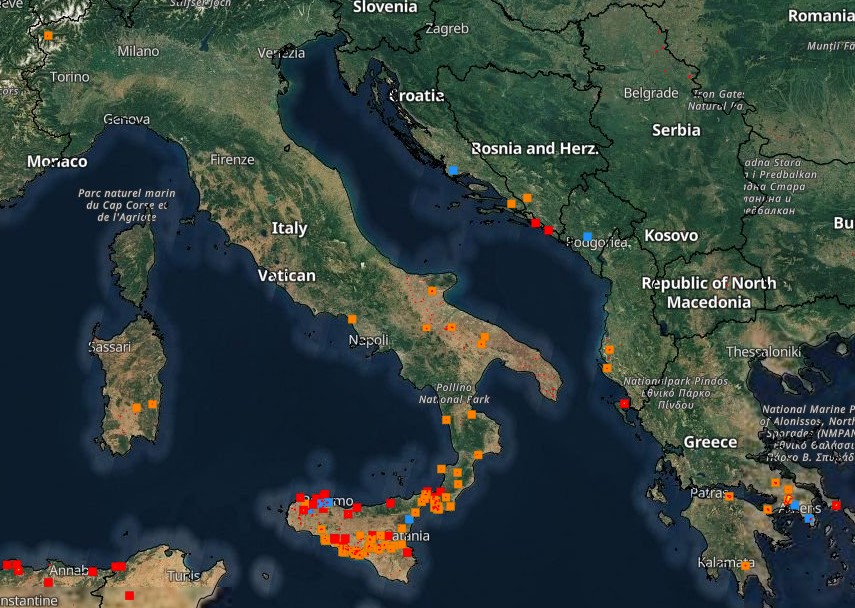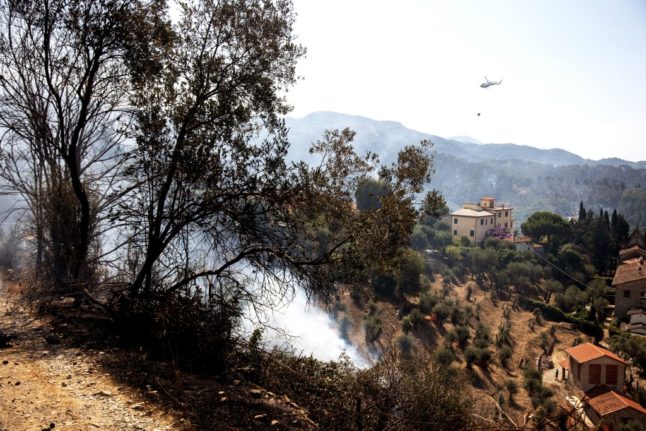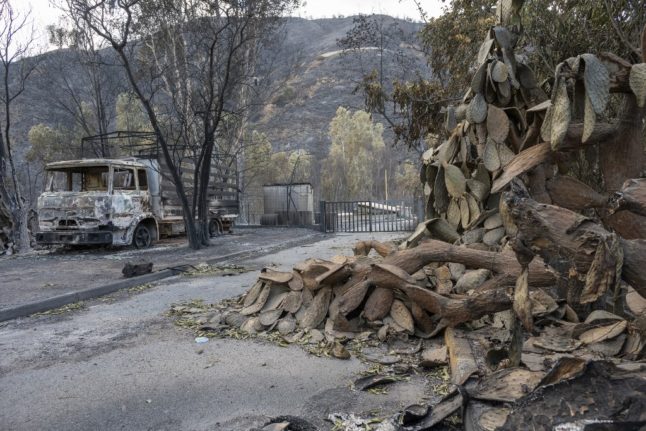With raging wildfires on parts of the Greek islands of Rhodes, Corfu and Evia leading to the country’s biggest-ever evacuation effort, many people planning travel in southern Europe are concerned about the risks amid unusually high summer temperatures.
Italy is known to suffer numerous wildfires during its hot, dry summers and 2022 was a particularly bad year, with the number of blazes in the country around three times higher than average amid a series of intense heatwaves.
READ ALSO: Should you reconsider travel to Italy during a heatwave?
So far, summer 2023 has not been the most destructive in terms of forest fires in Italy, which may come as a surprise given the recent blistering temperatures.
But as a prolonged heatwave continues to hang over the south of Italy, the country’s hottest and driest regions are seeing their first major wildfire outbreaks early this week.
In Sicily, Palermo’s Falcone Borsellino airport was closed on Tuesday morning after fast-spreading wildfires reached the perimeter, and surrounding roads and railways were closed.
While the fires in the airport’s vicinity were brought under control on Tuesday, firefighters continued to battle blazes raging nearby including on the Capo Gallo mountain above the seaside resort of Mondello, and the Bellolampo hill, where on Monday night part of the local landfill was reported to be on fire and emitting poisonous fumes.
READ ALSO: Blackouts, water shortages, wildfires: How extreme heat is hitting Sicily
Sicily has been on alert for wildfires for the past week, and arsonists were blamed for starting several destructive fires as temperatures hit 44-45C in many areas.

In the southern region of Puglia, no major fires were reported in recent days. However there were dozens of active blazes on Tuesday afternoon according to the European Forest Fire Information System (EFFIS), and local safety authorities warned that the fire season was just getting started.
The number of wildfires reported in the southern region has been rising steadily since June, and the current heatwave “brought with it, as always happens, an intensification of fires in the region, facilitated by the very high temperatures and the lack of rainfall,” regional civil protection committee head Maurizio Bruno told local media on Monday.
There were as many as 70 active wildfires on Sunday in the Calabria region, particularly in the provinces of Reggio Calabria and Cosenza.
While the latest news reports are worrying, EFFIS data shows that Italy has so far seen below-average numbers of fires this summer.
Abundant rainfall during the spring months played a central role in reducing the number of wildfires so far, especially in the south of the country, which saw a surplus of “120 millimetres of rain on average” in May alone, according to Gherardo Chirici, director of forest geomatics at the University of Florence.
Experts warn that dry turf and scorching heat favours the spread of fires, some of which begin spontaneously, though the majority are caused by human actions.

“Green vegetation” and “damp ground” have so far helped prevent wildfires, Chirico says.
“Wildfire season will surely come,” he says, “though we hope it will remain below the averages of past years”.
“According to our models, the trend registered so far cannot be fully reversed.”
If this trend continues, Italy could see thousands of hectares of land spared from destruction as well as lower CO2 emissions.
Some 13,200 hectares of land in Italy have been burnt up by 52 major fires this year, according to EFFIS data.
The figure is, as yet, far lower than that in 2022, when a total of 58,750 hectares were burnt by blazes.
And in 2021, 659 major fires claimed 150,550 hectares, making it the second-worst year for wildfires in Italian history after 2007.
The amount of CO2 produced by wildfires in the country stood at 0.4 megatonnes (Mt) at the end of June – that’s 1.8 Mt less than the total for 2022 (2.2 Mt).



 Please whitelist us to continue reading.
Please whitelist us to continue reading.
Member comments